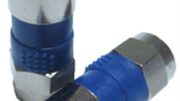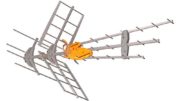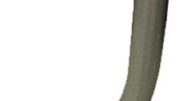It seems like the prices of just about everything have gone through the roof. I paid $199 for my first smartphone and yeah, there was a 2-year contract but I owned it after that. Today if you want to own a phone you need to buy it outright and it’s going to cost you nearly $1,000 in most cases. Gas in my neighborhood briefly popped over $6 a gallon, and lately I’m paying $200 for four or five bags of groceries. Netflix and Hulu streaming used to be free, and now you’ll pay over $40 a month for the two if you want the top packages.
Why am I bringing all this up? Because there’s a way you can pay once for your entertainment and have it forever. That’s right, even today it can be done. Buy a TV antenna from Solid Signal and you’ll receive free TV signals for as long as that antenna lasts. Buy the right antenna and it could last decades. You don’t hear that much anymore.
But, you know that. You came to this article because it’s not working the way you expected.
Why you’re not getting the channel you want
When you put up your antenna, aimed it toward the towers, and got a lot of channels immediately. But maybe you’re missing one that’s important to you. That can be frustrating. Here are three reasons that might happen, and what you can do about it.
#1: It’s just too far away
There’s a lot of hype in the TV antenna business. Generally speaking, you should almost always be able to get TV signals from 35 miles away. Get to 55 miles away and you’re likely to get practically every channel by using an outdoor antenna. But, once you’re at 60 miles plus, it gets harder to receive those signals. Most large antennas, including the ones we sell at Solid Signal, will say that they are rated for 60 to 75 miles plus.
Despite the claims made by folks on Amazon, you’re not going to get reception at 125 miles. Here’s why. Once you get to 75 miles, even with a clear path to the towers, it gets harder for you to get the channel you want.
Solution: Start with the largest antenna you can get. Mount it as high up as you can. You can even call Solid Signal for a custom quote on an antenna tower that will let you put the antenna far above the trees.
You should know: In most cases, a preamplifier is not going to help you. A preamplifier for digital signals helps compensate for long runs, and it can help smaller antennas get more signal, but if the signal is already so weak that it’s near the same level as the background noise, an amplifier will do nothing. On the other hand, if you’re within about 40-50 miles from the towers and still not getting great reception, an amplifier could help.
#2: There’s too much stuff between you and the tower
You could be at the bottom of a hill or canyon. You could be in the middle of a wooded area. There are a lot of cases where there’s something between you and the broadcast site that the signal can’t pass through. Different frequencies can pass through different things, so it’s very possible that you get some channels and not others.
Solution: This is another case where the best thing to do is put that antenna up high. Call for a tower quote or use a long mast if you can’t put a tower on your property. The higher up you get, the better.
You should know: If you are really at the bottom of a canyon, it just might not be possible to get that antenna up high enough. Unfortunately this is a case where you simply might not be able to get that channel from that location.
#3: You have the wrong kind of antenna
Most TV antennas, even large ones, are rated for UHF reception, that is channels 14-35. If you want to receive channels 2-13, you may need a larger VHF antenna. You can add a VHF antenna to your existing UHF antenna. Often times, the cost of adding VHF is about the same as simply buying the right antenna.
Solution: Buy an antenna that supports UHF and VHF reception even if you don’t think you need it. Today, most areas have at least one station on VHF, and many major cities have several major network stations on VHF. It’s smart to be futureproof.
You should know: The channel shown on screen may not be the one that’s actually used for broadcast. This is due to a system called PSIP which was first put in place in the ’00s when broadcasting went digital. You can use a site like antennaweb.com to get the actual broadcast channel, or call the experts at Solid Signal and we’ll help.
Get free help from the experts
The experts at Solid Signal are here for you! We have real qualified antenna technicians just a call away. Call us at 888-233-7563 during East Coast business hours. We’ll ask some questions and recommend the best antenna hardware for your location. We’ll even suggest accessories that might make things even better! If it’s after hours, fill out the form below. We’ll get back to you, usually within one business day.





